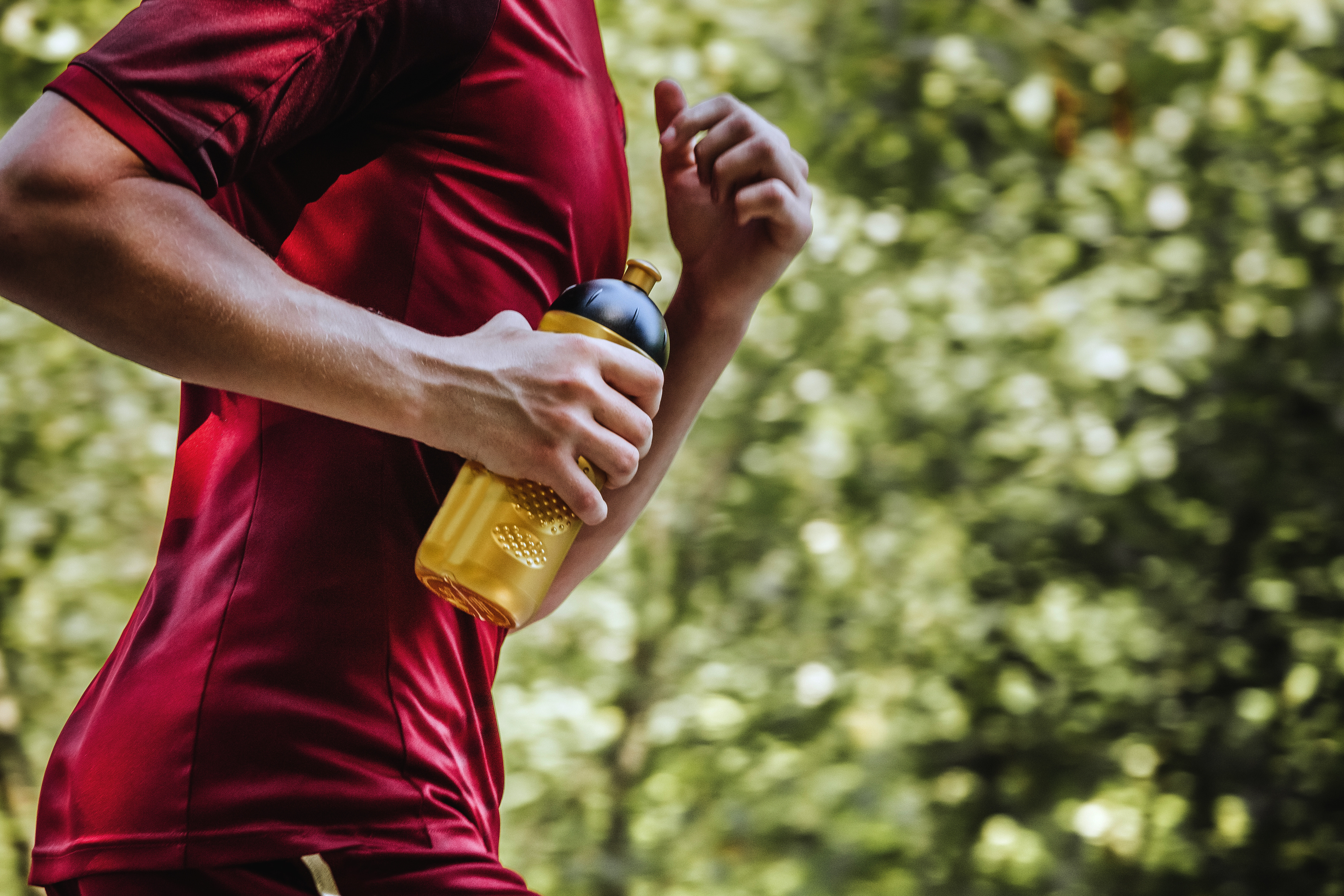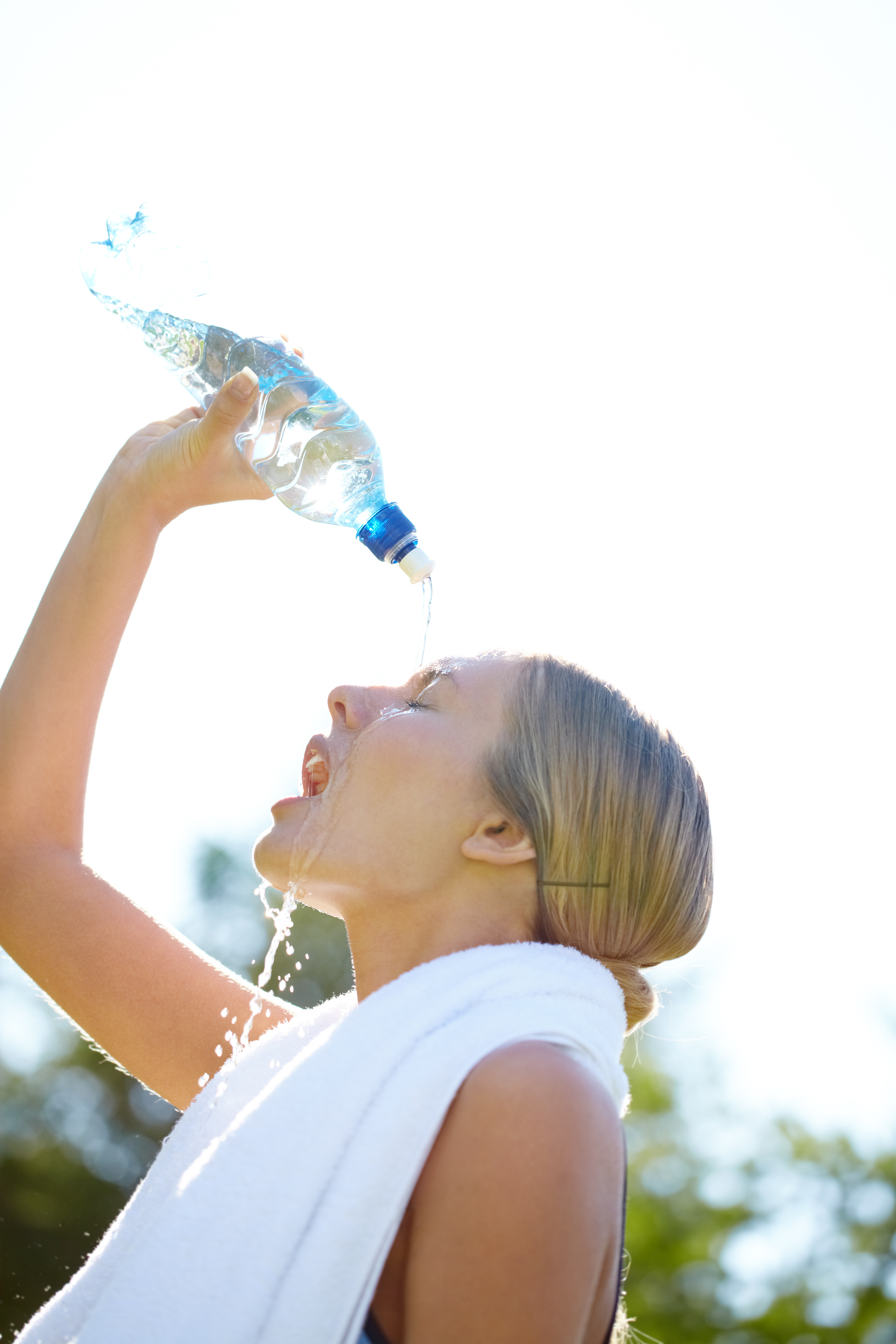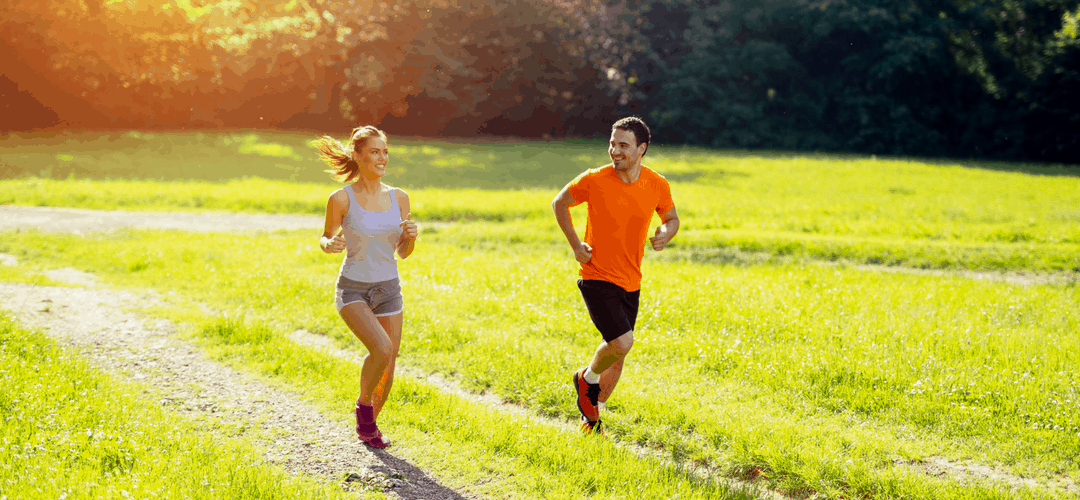Here at Rainier Fruit we know about heat. Our orchards are located in the Columbia Valley which is essentially a desert. Although cold in the winter, the summer temperatures can easily exceed 90+ degrees and even 100+ degrees from time to time. Hot temperatures are not only damaging to humans, but also to fruit. To protect our cherries and blueberries, we cover our orchards with shade cloth. The thin cloth helps reduce the damaging heat from the sun and keep the fruit cool enhancing the overall quality.
For active outdoor enthusiasts, heat can also be a problem. Whether you are walking, running, hiking, biking or taking part in any summer fun, it’s important to use good common sense when the temperatures start to soar. Laura from This Runner’s Recipes has some helpful tips for to remember before heading out for your next workout.
Lace Up Tips from Laura
Summer has arrived, and with it comes the the bane of many runners – heat and humidity. Summer running certainly has many advantages, including more daylight in the mornings and evenings and no need to bundle up in several layers for just a 3 mile run. However, summer running can include new problems like dehydration and risk of heat exhaustion or heat stroke.
But high temps shouldn’t keep you indoors or halt your training throughout the hottest months of the year. Instead, heed these summer running tips to help you stay safe on your summer runs while making the most of your training – so you are ready when fall racing season arrives.
Adjust Your Pace
The hotter the temperatures are outside, the harder it will be to sustain your normal running pace. This is due to a combination of factors that decrease how much oxygen-rich blood reaches your muscles. Instead of being a slave to your GPS watch or app, focus on running by effort. A majority of your runs should be done at a comfortable effort, easy enough that you can carry on a conversation. As long as you maintain this same effort, you will receive the same training benefits, even if your average pace is slower.
Once the temperature hits 65 degrees and higher, you can expect your pace to slow down by 5-10 seconds per mile for each 5-degree Fahrenheit increase in temperature until you acclimate – and even still a few extra seconds per mile after you have acclimated. So if you are doing a tempo run in 85 degree heat, be mindful that your pace may need to be adjusted by 10-20 seconds per mile depending on the humidity and how acclimated you are. As with easy runs, focus on perceived effort rather than trying to hit the same pace you hit during the cool of spring and fall.
Speed workouts and 5K/10K races pose a significant risk for overheating. During high intensity efforts, the high level of heat production from running hard, combined with the external temperature make it difficult to regulate your core temperature. If you push too hard, your body could overheat, which can lead to heat exhaustion or heat stroke
Adjusting your pace applies to longer distances races as well, even if those are run at a lower intensity. You need to adjust your paces for these runs so that you avoid overheating for as long as possible.
Carry Water on a Run
You may be able to run 8 or 10 miles in fall or winter without needing any water, but summer changes your hydration needs. The hotter the temperatures, the more you sweat; the more you sweat, the more fluids you lose and your blood volume decreases. As your blood volume decreases, less oxygen is transported to your working muscles and your heart has to work harder, even at the same pace. By staying well hydrated before and during runs, long and short alike, you can prevent the strain that dehydration places on your running during the hot summer months.
There are numerous options available for how to stay hydrated on a run. You can rely on public water fountains, especially in big cities, or stash a water bottle in a discreet area along your route. You can carry your own water using a handheld water bottle, a hydration vest, or a hydration waist pack. However you choose to carry your water, be sure to drink at frequent intervals and increase the volume of water you drink as the temperature increases.

Electrolytes
Water alone won’t replace what you lose in sweat. Sodium and other electrolytes are lost in sweat, so you can be drinking gulp after gulp of plain water and still deal with dehydration. Electrolytes, including potassium, magnesium, and calcium, in addition to sodium, are minerals that play a role in fluid balance and muscle contractions. Too few electrolytes can cause muscle cramping and dehydration. Drinking too much plain water without electrolytes can also put you at risk for hyponatremia, a potentially fatal condition in which your blood is too diluted.
You don’t have to chug a sugary sports drink to keep your electrolyte levels balanced. There are multiple sports nutrition products that deliver electrolytes without all the sugar and artificial colorings. Be mindful of your sodium, potassium, magnesium, and calcium intake as well; a banana before a run or some sea salt on your meal the night before can aid in maintaining healthy electrolyte levels.
Stay Cool
In addition to water for drinking, bring extra plain water with you to dump on your head for speed workouts, hilly routes, or long runs in hot and humid weather. The cool water will help control your core temperature and prevent overheating and serious heat illness.
You can also dunk your hat or a Buff into cold water before leaving for your run. Cold fabric around the major arteries such as your wrist and neck will help keep your core temperature from skyrocketing in the heat, and a wet hat will keep your head cool.
After your run, your cool down exercise is critical. Take a few minutes to walk to help return your body to homeostasis. Running in the heat can increase your blood pressure, especially during a hard workout, and transitioning quickly from running to stopping can cause dizziness or fainting.

And finally, be sure to rehydrate with water and enjoy some hydrating foods after your run, such as Rainier Fruit cherries, blueberries, and apples. There’s nothing like fresh fruit to cool your down after a hot summer run and provide you with healthy nutrients!
Whether the dead of winter or the dog days of summer the work and the workouts must go on! Just remember to practice good safety behaviors and common sense that will keep you healthy and Wholesome to the Core.

